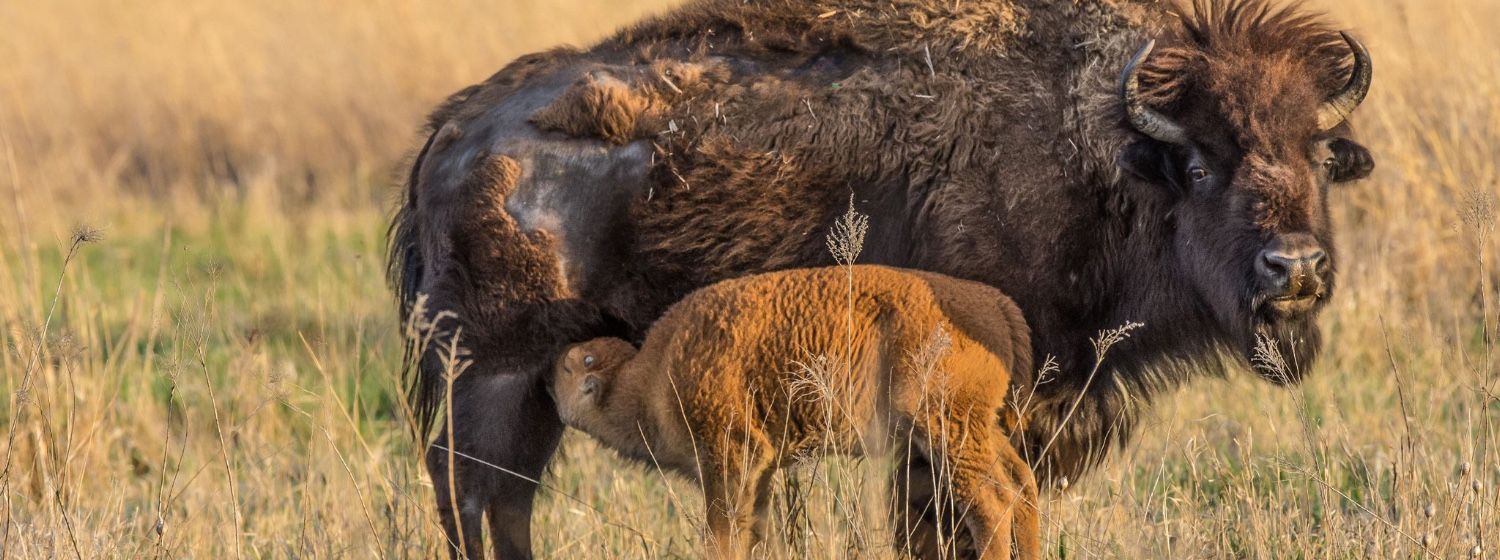The American bison, also referred to as buffalo, were once the dominant grazers of the Great Plains. These shaggy beasts can weigh more than a ton and are an iconic symbol of the prairie. Bison populations plummeted by the mid-19th century and by the late 1800’s less than 1000 remained. Today, the Crane Trust seeks to restore both the vision and the relationship these animals once had with the central Platte River.

Before their decline due to overharvest bison existed in vast migratory herds numbering in the millions. Because of their great numbers bison had widespread effects on the ecosystem. Expansive bison herds created nutrient-transfers of enormous magnitude by grazing and processing waste wherever they roamed. Bison disturbed the ground with their hooves creating wallows and trails void of vegetation, and existed in harmony with both the prairies and the Platte River. Grazing by bison kept the prairies in a constant state of repair and change, and is one of the processes land managers seek to mimic for grassland maintenance. Today there are more than 15,000 free-ranging bison in North America, and another 500,000 in fenced herds. However, the Crane Trust is one of just a few places in Nebraska where visitors can come to get a glimpse of these animals in their natural surroundings, and the only such place where cranes, bison, and the Platte River combine to give a glimpse of what once was.
Read more about the research being conducted around the Crane Trust bison herd.
KC King, Andrew Caven, and Jacob Salter

